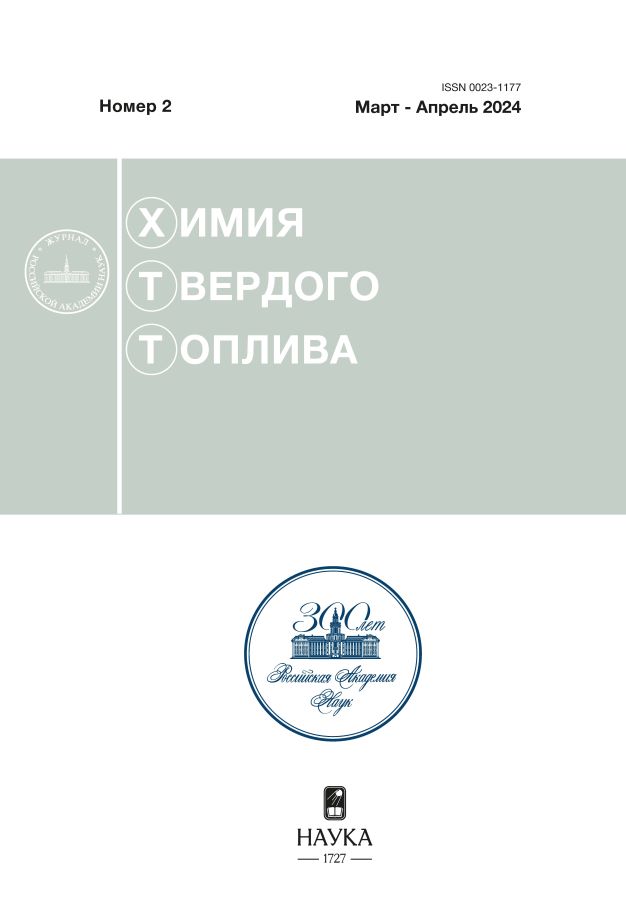The Effect of the Inhibitory Composition on the Composition of Paraffin Hydrocarbons in Oil Sediments
- Авторлар: Prozorova I.V.1, Yudina N.V.1
-
Мекемелер:
- Institute of Petroleum Chemistry, Siberian Branch of the Russian Academy of Sciences
- Шығарылым: № 2 (2024)
- Беттер: 10-15
- Бөлім: Articles
- URL: https://rjeid.com/0023-1177/article/view/661564
- DOI: https://doi.org/10.31857/S0023117724020037
- EDN: https://elibrary.ru/OMSSMG
- ID: 661564
Дәйексөз келтіру
Аннотация
The effect of an inhibitory composition based on an amphiphilic polymer of polyacrylate and stearic acid on the composition of paraffinic hydrocarbons in asphalt-resin-paraffin deposits (ARPD) of high-paraffin oil was studied. It is shown that with the addition of an amphiphilic polymer and a composition to oil, differences are observed in the nature of their molecular mass distribution of paraffinic hydrocarbons of the surfactants. The action of the polymer leads to a decrease in the content of hydrocarbons of the composition C16–C21 and an increase in the proportion of high-molecular hydrocarbons C22–C34. The use of stearic acid as a surfactant in the composition, on the contrary, reduces the amount of high molecular weight paraffin hydrocarbons.
Негізгі сөздер
Толық мәтін
Авторлар туралы
I. Prozorova
Institute of Petroleum Chemistry, Siberian Branch of the Russian Academy of Sciences
Хат алмасуға жауапты Автор.
Email: piv@ipc.tsc.ru
Ресей, Tomsk
N. Yudina
Institute of Petroleum Chemistry, Siberian Branch of the Russian Academy of Sciences
Email: natal@ipc.tsc.ru
Ресей, Tomsk
Әдебиет тізімі
- Eke W., Kyei S. K., Achugasim O., Ajienka J. A. // Applied Petrochem. Res. 2021. № 2. Р. 199. https://doi.org/10.1007/s13203-021-00271-1
- Bin X. // Petrol. Sci. Tech. 2018. V. 36. P. 1635. https://doi.org/10.1080/10916466.2018.1496113
- Zhao Y., Kumar L., Paso K., Safieva J. // Energy Fuels. 2012. V. 26. № 10. P. 6323. https://doi.org/10.1021/ef3012454
- Singh P., Venkatesan R., Fogler H.S. Nagarajan N. // AIChE Journal. 2000. V. 46. № 5. Р. 1059. https://doi.org:10.1002/aic.690460517
- Vignati E., Piazza R., Visintin R.F.G., Lapasin R, D’Antona P., Lockhart T.P. // Physics: Condensed Matter. 2005. V. 17. № 45. P. 3651. https://doi.org:10.1088/09538984/17/45/061
- Quan Q., Wang W., Wang P., Yang J. // Brazilian J. Chem. Eng. 2016. V. 33. № 4. Р. 1055. https://doi.org:10.1590/0104-6632.20160334s20150023
- Visintin R.F.G., Lapasin R., Vignati E., D’Antona P. // Langmuir. 2005. V. 21. № 14. P. 6240. https://doi.org/10.1021/la050705k
- Вidmus H.O., Mehrotra A.K. // Energy Fuels. 2009. V. 23. № 6. Р. 3184. https://doi.org:10.1021/ef900224r
- Lee J., Zahir L.Н.A., Larsson R.G. // Energy Fuels. 2020. V. 34. № 10. P. 12330. https://doi.org/10.1021/acs.energyfuels.0c02184
- Cabanillas J.P., Leiroz A.T., Azevedo L.F.A. // Energy Fuels. 2016. V. 30 № 1. Р. 1. https://doi.org/10.1021/acs.energyfuels.5b02344
Қосымша файлдар











